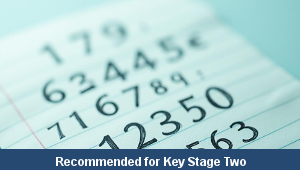Lesson Three – Factor Facts

This maths teaching pack for Key Stage Two gets the children to explore and model some of the special techniques that can be used to identify matching sets of factors for different numbers to one hundred.
The class can explain how they found the sets of factors to match each of the different number facts by using knowledge of the properties of numbers and multiplication calculations.
Download this teaching pack including a lesson plan, classroom activities and an interactive presentation to explore and model some of the special techniques that can be used to identify matching sets of factors for different numbers to one hundred
Activities in this teaching pack include a set of cards to identify true and false facts about factors of different numbers to one hundred by suggesting different ways of proving each statement using knowledge of the properties of numbers and multiplication calculations.
The interactive presentation gets the children to explore some of the techniques that can be used to identify matching factors for different numbers to one hundred.
This lesson is part of a maths scheme of work to get the children to identify and record the factors of different numbers to one hundred which can be utilised when performing mental multiplication calculations. There are teaching activities for shared learning, differentiated worksheets to support independent learning and interactive presentations to introduce concepts and key skills.
-

Maths Arithmetic Assessment
Assess abilities in solving arithmetic number problems for addition, subtraction, multiplication and division when working with informal and formal written calculations
-

Environment
Identify and describe some of the special landscapes and locations that can be found in the world and reflect on how they can be protected and preserved for the future
-

Silent Letter Words
Explore and illustrate the meanings and spellings of some different words with silent letters when using them in a range of topics and scenarios
-

Complaint Letters
Explain and model how to format and structure writing when composing letters of complaint about different issues and scenarios
